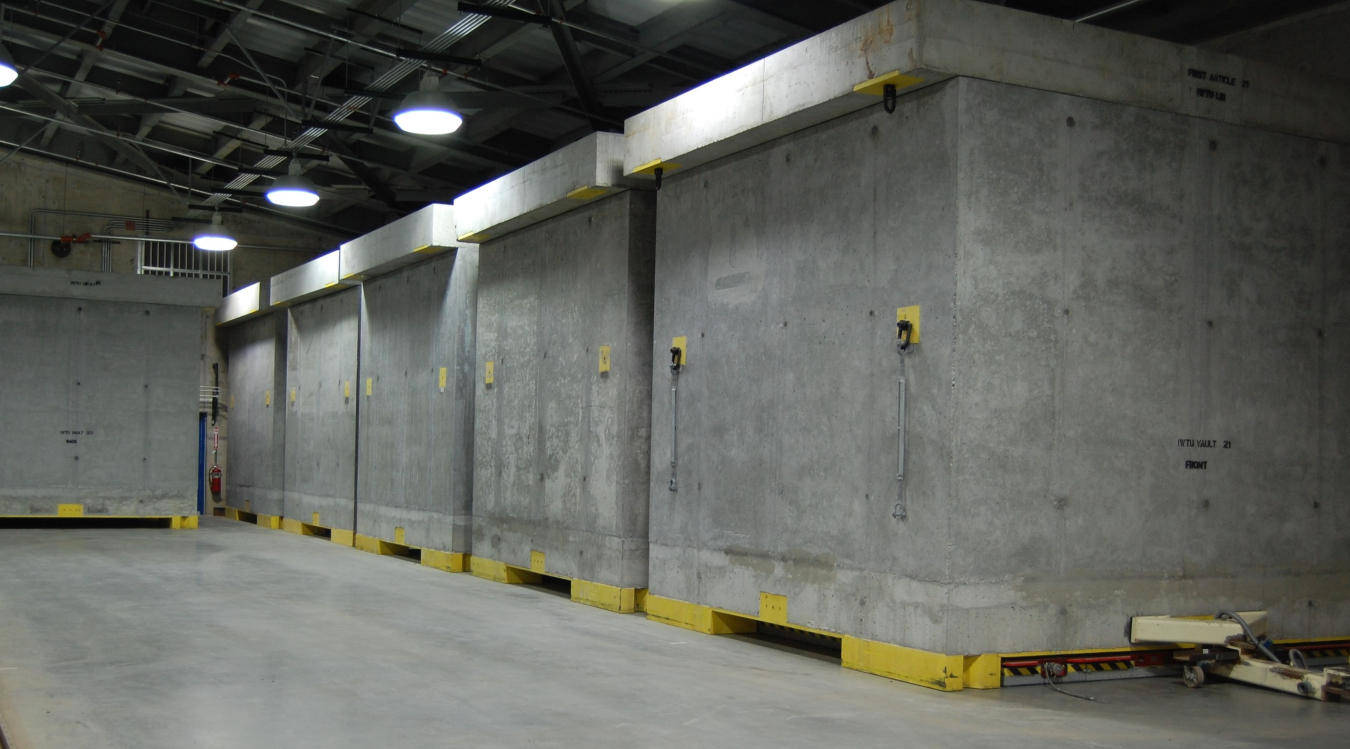As crews ready a liquid waste treatment facility at the DOE Idaho National Laboratory Site for sodium-bearing waste processing, EM is preparing to construct a new building to provide additional capacity for the safe storage of treated waste material.
Office of Environmental Management
January 24, 2023
Shown here are concrete vaults that will hold stainless steel canisters of treated sodium-bearing waste from Integrated Waste Treatment Unit (IWTU) processing. A new building to be constructed will provide more than double the current storage capacity for treated waste material from the IWTU.
IDAHO FALLS, Idaho – As crews ready a liquid waste treatment facility at the DOE Idaho National Laboratory Site for sodium-bearing waste processing, EM is preparing to construct a new building to provide additional capacity for the safe storage of treated waste material.
In coming weeks, EM is set to construct the nearly 20,000-square-foot building at the Integrated Waste Treatment Unit (IWTU) site, a project that will more than double the current storage capacity of concrete vaults onsite. Contained within each storage vault will be 16 stainless steel canisters of dried, sodium-bearing waste, treated through the IWTU steam-reforming process.
Sodium-bearing liquid waste was generated during decontamination activities following historic spent nuclear fuel reprocessing, which ended at the Idaho Nuclear Technology and Engineering Center in 1992. Approximately 900,000 gallons of liquid waste remains in three underground stainless steel storage tanks.
Performance test and analyses conducted during simulant and confirmatory runs at the IWTU indicated that 78 vaults will be required to safely store the processed waste. An existing storage facility has room for only 36 vaults.
The new storage building will add space for an additional 48 vaults for a combined capacity of 84 concrete vaults consisting of 1,344 canisters. Treated sodium-bearing waste will be safely monitored in the two storage buildings until a national geologic repository is available for permanent disposal of that treated waste.
The second storage building will have the same stringent design features and operational requirements of the existing storage building. It will be constructed of structural steel and reinforced concrete. A breezeway will connect the two buildings.
The estimated cost of constructing the new storage building is $15 to $18 million.
To receive the latest news and updates about the Office of Environmental Management, submit your e-mail address.

